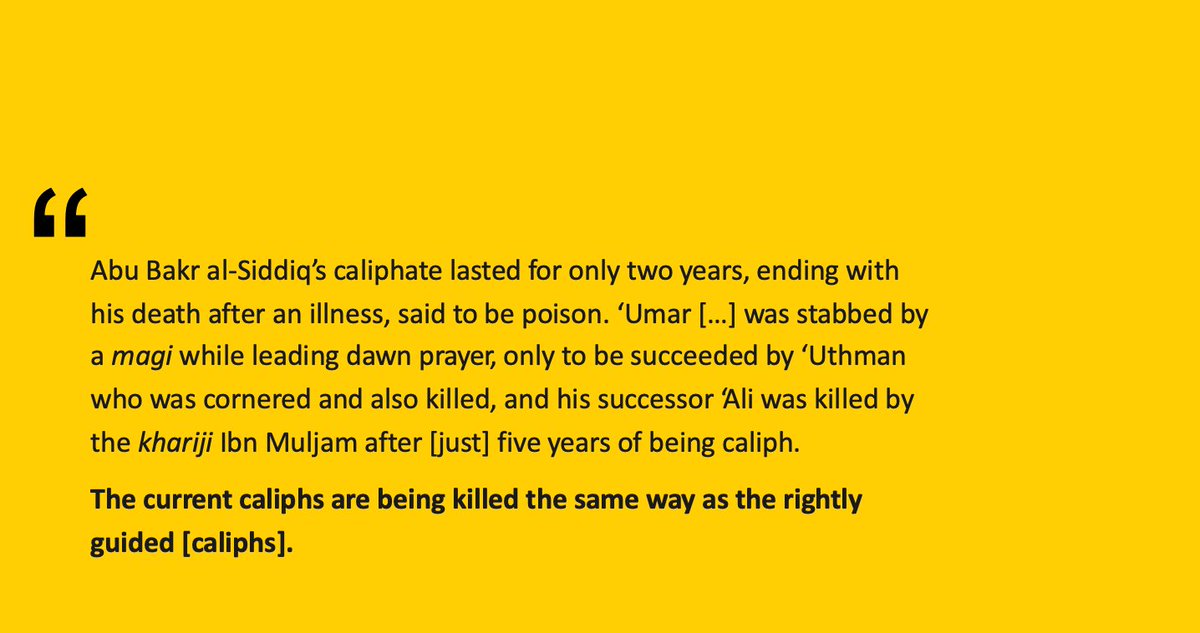
1. Earlier this month, we reported that #IS comms activity had fallen off a cliff in recent weeks.
In the last few days, the reason for that has become clear: its media team was putting everything into prepping for a global campaign drumming up support for the new caliph.
In the last few days, the reason for that has become clear: its media team was putting everything into prepping for a global campaign drumming up support for the new caliph.

2. The campaign started on 10 March, when #IS published a statement from new spox Abu ‘Umar al-Muhajir declaring that Qurashi had died and been replaced by Qurashi 2.0.
This came after a week-on-week drop in comms that left #IS supporter activities at a historic low.
This came after a week-on-week drop in comms that left #IS supporter activities at a historic low.

3. It wasn’t enough to just publish a statement. #IS needed to show that its new leader was credible.
Accordingly, in the days that followed, it published hundreds of photographs showing fighters from West Africa to Southeast Asia pledging allegiance to the new caliph.
Accordingly, in the days that followed, it published hundreds of photographs showing fighters from West Africa to Southeast Asia pledging allegiance to the new caliph.

4. This was as much a show of strength as it was an attempt to demonstrate that Qurashi 2.0—Abul Hasan al-Hashimi al-Qurashi—is a ‘legitimate’ replacement.
Interestingly, #IS put a *lot* more effort into this comms campaign than it did for the last one.



Interestingly, #IS put a *lot* more effort into this comms campaign than it did for the last one.




5. Predictably, this campaign precipitated a surge in #IS supporter activity.
While #IS munasirin haven’t been quite as active as they were during the first few days of the #Ghwayran siege, they have shared more official media in the last few days than they have done in years
While #IS munasirin haven’t been quite as active as they were during the first few days of the #Ghwayran siege, they have shared more official media in the last few days than they have done in years

6. These dynamics show just how much #IS’s munasirin operate in lockstep with its Central Media Diwan.
There’ll likely be a similar surge in activity if #IS deploys a revenge and/or Ramadan campaign in the coming weeks.
There’ll likely be a similar surge in activity if #IS deploys a revenge and/or Ramadan campaign in the coming weeks.
https://twitter.com/Ex_Trac/status/1502263193397309440
7. We’ll continue to monitor these dynamics in the coming weeks at @Ex_Trac.
Visit extrac.io for more information.
Visit extrac.io for more information.
• • •
Missing some Tweet in this thread? You can try to
force a refresh























